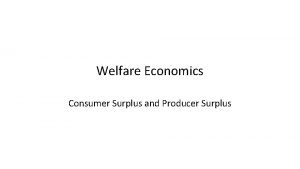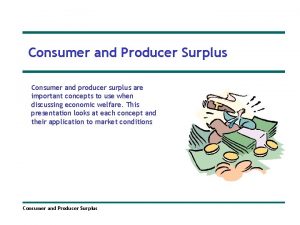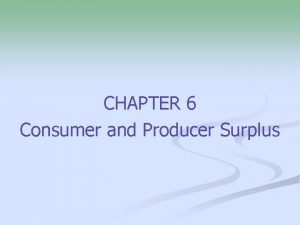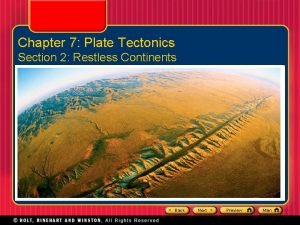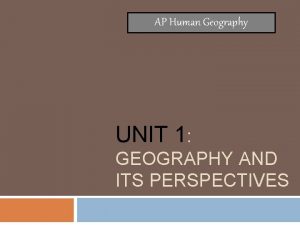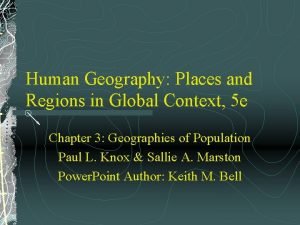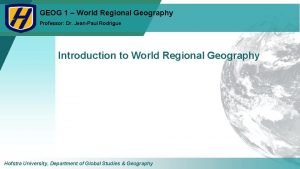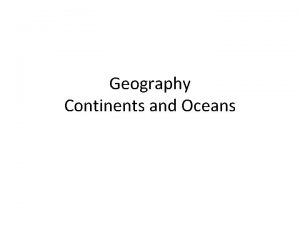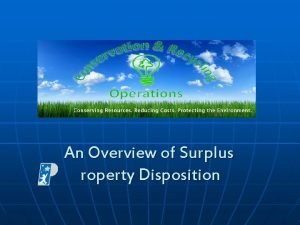Key Terms Geography 2Economics Regions Economics Continents Surplus









- Slides: 9

Key Terms – Geography (2)/Economics Regions * Economics Continents Surplus Currency Goods and Services Supply and Demand Price Cost/Benefit Analysis Human Environment Interactions * Movement* The Five Themes of Geography

Regions Regions → areas of the earth that share certain features and can be defined by what surrounds them. The world is broken into continents which are large landmasses of the world Can be defined by: Physical characteristics Human characteristics

Human Environment Interactions Human environment interactions describe the way in which the physical setting of a place interacts with its population These interactions involve the construction of buildings, farming, digging, removing trees, etc.

Movement → involves the shift of people, goods or ideas from one place or another It can involve the migration of people, the delivery of goods, the exchange of ideas.

The Five Themes of Geography is studied through the lenses of five overarching themes that provide different types of information. These themes are: Location Place Region Movement Human-Environment Interactions

Economics → the study of the production and consumption of goods and services Economics guide many of the decisions we make within our lives

Means of Exchange Older societies used surpluses as a means of generating more wealth for themselves. Surplus → extra amounts of any item or good Currency would be exchanged for goods in the future → paper or coin items that can be used as equal value as an exchange for other goods Goods and services are what is typically traded for other goods and services in a barter system or for currency in a currency system.

Supply and Demand Supply and Demand have been used to dictate the cost of an item for many years. Supply refers to the amount of an item that is available. Demand refers to how much an item is desired by a consumer group. When a supply is high and demand is low, prices tend to go down or deflate. When supply is low and demand is high, prices tend to inflate or grow There is rarely if ever an instance where both of these things are equal.

Cost/Benefit Analysis Before any item is purchased, consumers tend to run a cost/benefit analysis to decide whether the item is worth purchasing. If the cost of an item outweighs the benefit that it provides, then the item is usually not purchased. If the benefit to an item outweighs its cost then the item is purchased more often than not.
 Consumer surplus economics
Consumer surplus economics Consumer surplus inelastic demand
Consumer surplus inelastic demand Supplier surplus
Supplier surplus Consumer surplus formula
Consumer surplus formula Chapter 24 the land where continents collided
Chapter 24 the land where continents collided Chapter 7 section 2 restless continents answer key
Chapter 7 section 2 restless continents answer key Thematic map ap human geography
Thematic map ap human geography Human geography places and regions in global context
Human geography places and regions in global context Geography: realms, regions, and concepts (doc or html) file
Geography: realms, regions, and concepts (doc or html) file Like terms and unlike terms in polynomials
Like terms and unlike terms in polynomials
